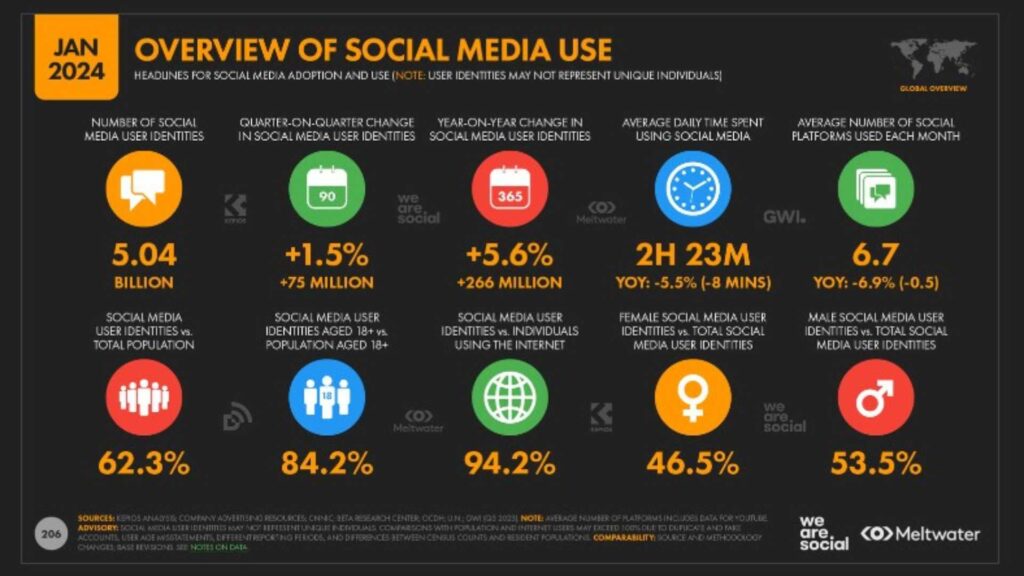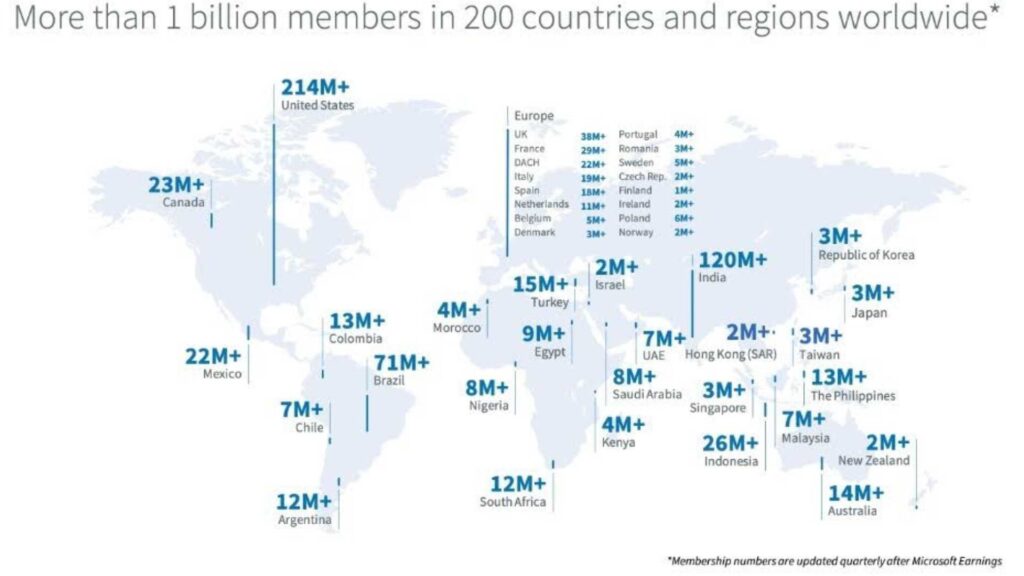MARKETING
How to Earn Topical Authority in 2022 and Beyond

The author’s views are entirely his or her own (excluding the unlikely event of hypnosis) and may not always reflect the views of Moz.
As is often the case with SEO, if you’re doing it well, then you are probably already topically relevant. Topical authority isn’t new, but it’s a term that I’m seeing a lot right now in the SEO sphere.
But hey — if you’ve not yet earned topical authority, now is a good time to start.
In this article, I’ll take a deep dive into topical authority: what it is, how to earn it, and, importantly, how to strategically develop topical relevance.
What is topical authority?
Topical authority is a measure of authority built up through proven expertise and trust in your field. The more high-quality, informative pieces of content there are on your site, the more likely your website is to be perceived as a trusted source of information on a particular topic.
To be topically authoritative, your site needs to serve your web user, answer all their questions, and provide high-quality content at every step of the buyer journey. Unlike domain authority (DA), topical authority is more of a quantitative measure of how authoritative a site may be. Whilst DA looks primarily at backlinks and the number of high-quality, relevant backlinks, topical authority is proven expertise built over time by covering the breadth and depth of a topic.
Why is building topical relevance important?
If you reach out to someone for a service or product and they speak confidently and passionately about their offering, answer all of your questions, and understand your needs, then you’re more likely to trust them. Why should the internet be any different?
Your buyers are drawn to your offering, your expertise, and your passion. Buyers also want to know you can help serve them and that you understand them.
In the digital world, content is how you nurture buyers. Where Google is concerned, topical relevance proves to search engines that you’re trustworthy and knowledgeable. We all know that Google wants to show its users the best possible content from the most credible sources.
You know a thing or two about your product or service, so prove it to Google through content. Cover related topics, hit keywords, and present information in a way that’s easy for your user (and Google) to understand.
Medic and topical authority
Google’s desire to present only the most useful pieces of information was made clear (if it wasn’t already) in 2018 through the medic update. Back in 2018, the medic update impacted all verticals, but predominantly, health.
It was a positive update, encouraging everyone to improve content production. The update meant that instead of writing content in isolation and expecting it to rank well, content needed to showcase expertise, authority, and trustworthiness (E-A-T).
And it makes sense for this standard to be upheld across the web, especially when we consider that there are more pieces of content being published than ever before. In short: publish only the most well-written, well-informed pieces on your website if you want to stay competitive.
How does topical authority help you rank higher?
Topical authority’s impact on rank is fairly logical. Consider your own buyer journey. You want to source a good product or service that you also love. Perhaps the brand values need to align with your own.
Before making a purchase, you most likely head to Google — but even if you didn’t, you’d be looking for credibility before you make your purchase. Without Google, you would need to source referrals from friends or pop into the store and speak with an advisor. You’d ask questions and gauge if the product or service does everything you need it to. You’d likely be looking to build a rapport and to see if you trust the person or business to deliver whatever you’re thinking of paying them for. If you were torn between two vendors, you might be swayed by the more passionate person or value-driven business.
Topical authority allows you to provide this same experience online. You showcase all the reasons why someone should buy from you. If you’re saying everything your competitor is saying — plus some more — and you’ve created different types of content to appeal to your audience (videos, guides, etc.), your site is starting to look more authoritative and useful. Why would Google prioritize a competitor site when it perceives your site to have more useful information?
There’s one key thing to remember: when it comes to ranking on Google and earning favor in the algorithm, you need to use keywords in your content. As you center your strategy around creating high-quality articles, you need to be especially cautious of keyword cannibalization.
There’s also what I call topical cannibalization. To build topical authority strategically, you need to know how to build out your content architecture in a smart way. I’m going to walk you through that now, step by step.
1. Research your topic
Before you can build out your content strategy, you need to research your topic. What you’re looking for are the search terms your buyers are typing into Google to solve their problems.
Here, you can turn to keyword tools like Moz’s keyword explorer. Type in a keyword (or your topic) and see what else is suggested. You will find exactly what terms are being searched in Google so you can use them within your content to earn ranks for them.

Moz shares keyword suggestions, many of which can form part of your content strategy. Remember: covering all relevant topics helps build topical authority.
Social media sites like Quora and Reddit are also useful. Within these sites, you can see exactly what discussions your audience is having. You’ll likely encounter their pain points, queries, and buyer apprehensions that you can then solve, answer, and/or soothe within your content.
Finally, it’s my favorite: people also ask (PAA). Want to know what your audience is asking? There’s a trove of information in there!

Tools like AlsoAsked make light work of PAA, allowing you to view PAA data in a visually appealing, hierarchical structure. There’s a lot of opportunity to build topical authority in any niche. Just take a look at knitting as an example!

2. Create pillars and clusters
When researching your topic, map out every single piece of content that you want to create based on what your audience is searching or looking for.
Then, you’re going to work on assigning keywords to the pieces. This is the crucial step that prevents keyword and topical cannibalization.
3. Map keywords to pillars using SERP analysis
When mapping keywords, it’s easy to assume that every keyword needs its own page. Take the knitting example from earlier: if you dig around in the keyword suggestions, you can find “what is knitting” (590 searches/month) and “history of knitting” (480 searches/month).
A quick analysis of the SERPs shows that these two keywords can perform well in SERPs used on the same page. You don’t need to write two articles. Two articles could result in what I call topical cannibalization.
4. Write high-quality, well-researched content
When planning your content, look for opportunities to write quality, well-researched, long-form articles instead of just trying to publish as many as possible.
Instead of writing two articles, consider writing one more in-depth article like sustainablefashioncollective.com did. Their article features high up on the SERPs for ‘what is knitting’ and has a featured snippet for “history of knitting”.

It’s also on page one for “knitting uses” (20 searches).
The point is, more articles don’t necessarily equate to more ranks. When it comes to topical authority, Google wants to present well-written, in-depth, well-informed articles.
5. Share it with your audience
There’s no need to wait for your page one rank before you get eyes on your article or page. Share it with your audience, use social media, and present content to your subscribers through email. Try repurposing content and creating videos.
Quick tips for earning topical authority

The steps above briefly detail the steps you can take to help build topical authority over time. Here are some final steps to integrate into your content plan:
-
Keep up with current events related to your topic.
-
Identify new trends and write about them.
-
Cluster your keywords and cover a topic in full based on SERP analysis.
-
Don’t be afraid to share something new — just because it’s not on the SERPs doesn’t mean you can’t be the first to say it.
-
Don’t be afraid to link out to trusted sources. Referencing other materials is a great way to show you’ve done your research.
-
Update your content to keep it fresh. For example, if you’ve got a page about your topic in 2021, it might be time to update it and make that article relevant to 2022.
How can you tell if a website is authoritative?
There are many ways to work out if a website is authoritative. Find out how the you can use the following items to tell if a website is authoritative:
-
Check the domain authority
-
Look out for indented SERPs
-
Check organic keywords
-
Strong internal link profile
-
Well-written, informed content
Check the domain authority
An SEO favorite is domain authority (DA). Although we’re focusing on topical authority here, domain authority is still a measure of an authoritative website. The DA score is a number between 1 and 100 that indicates the website’s strength in search engine results pages. There are several factors that feed into this algorithm and backlinks are one of them.
Simply put, the more backlinks a site or content piece has earned, the higher the domain authority will likely be. After all, other websites tend to link to highly authoritative websites.
Look out for indented SERPs
Indented SERPs are a strong indicator that a site is topically relevant. If you search a keyword such as: ‘landscape design tips’ (90 searches/month), you might find housebeautiful.com and their indented search results.
Indented SERPs are where similar topics that exist on one website are grouped together, giving the site more prominence in search results.

Check organic keywords
Generally, the more keywords a site ranks for on a topic, the more topically authoritative it will be.
SEO tools can give you some insights into what your competitors are ranking for. They can also share topic ideas for how you can close the gap by covering the same topics.
If you do cover the same topics, remember to add more detail, more media, or a unique perspective.
Strong internal link profile
Assuming a site is using internal linking well, a strong internal link profile should demonstrate that a site is authoritative on a subject.
Take ‘beginners guide to seo’ (480 searches/month) as an example. For this keyword, Moz is in position one.

A quick internal link analysis tells me there are 26 links within content pointing to this page. Links are coming from pages such as On-Page Ranking Factors in the ‘learn’ section of the website. This is a highly relevant topic for beginner guide SEO.
Well-written, informed content
If you’re on a website and you’re discovering well-written, high-quality, original pieces of writing, then it shows that the site has some topical authority.
If the site is also updating this high-level content regularly, it’s probably earning topical relevance.
Do backlinks still count toward website authority?
Yes, backlinks still contribute to website authority. We can also predict that backlinks will continue to be helpful toward SERP rankings — but they’re not everything.
Backlinks needn’t be your goal when it comes to topical relevance. They will happen naturally as you earn visibility in SERPs and write high-quality, linkable content. Nevertheless, authoritative sites will continue to earn backlinks at a higher rate than non-authoritative sites. Plus, having topical authority can only help you attract links from other websites.
Koray Tugberk conducted an incredibly useful experiment where topical authority is concerned. To add credibility to his study he isolated E-A-T as the driving factor for success — he literally implemented no other SEO tactic. Take a look at his interview with Matt Diggity:
Tuberk claims he earned 300,000 organic users, built up from zero in just five months. And he did it all using topical authority and semantic SEO only — no backlinks.
Final thoughts on topical authority
Building authority on a subject should come easy. After all, this is the topic you loved so much you built a website to share your expertise on it, right?
Reach out to your subject matter experts, ask them questions, and get to writing.
Be creative with what you put out there, repurpose your content, answer questions, and nurture your buyer.
Follow my steps above and don’t be afraid to inject some new information into the SERPs. Your buyer wants to know you and your business! The extra efforts go a long way when it comes to content.
Remember, content and topical authority in a digital world often replace face-to-face interactions. Show your buyer why you’re an expert, what you know about your subject, and all the reasons why they should trust you.
MARKETING
The key to correcting the C-suite trust deficit

Take a moment to search “CMO tenure” and you’ll find a wide variety of content discussing the short tenure of CMOs and how it’s among the shortest of roles in the C-suite. If you dive deeper, you’ll find that CEOs don’t seem to trust CMOs.
Boathouse’s CMO Insights study (registration required) noted several sobering conclusions:
- 34% of CEOs have great confidence in their CMOs.
- 32% of CEOs trust their CMOs.
- 56% of CEOs believe their CMO supports their long-term vision.
- And only 10% of CEOs believe their CMO puts the CEO’s needs before their own.
If these statistics also apply to the CMO’s entire organization, then it’s clear we have a trust problem with marketing leadership.
If you haven’t read Patrick Lencioni’s “The Five Dysfunctions of a Team,” I consider it required reading for anyone in any leadership role. In his book, Lencioni builds a pyramid of dysfunctions that need to be addressed for a team to succeed. The foundational dysfunction — with which one cannot build a successful team — is “absence of trust.” We see it at scale with marketing organizations today.
Introducing objectivity through data
In “Hamlet,” Shakespeare writes, “There is nothing either good or bad, but thinking makes it so.” Each organization that makes up a company looks at the company from a different perspective. What marketing sees as positive, finance may see as negative. But who’s right? No one.
Usually, there is no objectivity because leadership comes up with an idea and we execute it. It’s like the fashion proverb “Beauty is in the eye of the beholder.” Unfortunately, we’re going to struggle to run a profitable organization if it’s run like a fashion show.
Therefore, we need to introduce objectivity to how we work. Leadership needs to come together to agree on goals that align with the goals of the broader organization. One element of this conversation should be an acknowledgment that this is turning a ship.
Often leaders — especially those without marketing backgrounds — are likely to expect instant gratification. It’s going to take time to turn the ship and you and your team would do well to set reasonable expectations right away.
Dig deeper: KPIs that connect: 5 metrics for marketing, sales and product alignment
Aligning goals and metrics across the organization
With goals in hand, we need to assign metrics to their progress and agree on the source(s) of truth. Once these objective measures are in place, perspective doesn’t matter. 2 + 2 = 4 regardless of whether you’re in HR or accounting.
Every public road has a speed limit and whether you’re in compliance with it has nothing to do with your perspective. If you’re above it, you’re wrong and subject to penalties. Referring to the fashion example, it’s not a fashion show where some people like a dress and others don’t.
By using data to objectively measure marketing’s progress within the organization and having the rest of the leadership buy into the strategy, we build trust through objectivity. Maybe the CEO would not have chosen the campaign the marketing team chose.
But if it was agreed that a >1 ROAS is how we measure a successful campaign, it can’t be argued that the campaign was unsuccessful if the ROAS was >1. In this example, the campaign was an objective success even if the CEO’s subjective opinion was negative.
Data-driven campaign planning
Within the marketing organization, campaigns should always be developed with measurement top of mind. Through analysis, we can determine what channels, creative, audiences and tactics will be most successful for a given campaign.
Being able to tell the leadership team that campaigns are chosen based on their ability to deliver measured results across metrics aligned to cross-departmental goals is a powerful message. It further builds trust and confidence that marketing isn’t run based on the CMO’s subjective opinions or gut decisions. Rather, it’s a collaborative, data-driven process.
For this to be successful, though, it can’t just be for show, where we make a gut decision and direct an analyst to go find data to back up our approach. This would be analytics theater, which is a perversion of the data. Instead, tell the analyst what you think you want to do and ask them to assess it.
For the rest of the organization’s leadership, ask questions when the marketing team presents a campaign. Find out how they came up with the strategy and expect to hear a lot about data — especially the metrics you all agreed would support the company’s overarching goals.
Dig deeper: 5 failure points of a marketing measurement plan — and how to fix them
Data literacy: Building credibility through transparency
Building trust doesn’t happen overnight, but a sustained practice of using data to drive marketing leadership’s decisions will build trust if the metrics ladder up to the organizational goals and all of leadership is bought into the measurement plan.
Over time, this trust will translate into longer tenure and more successful teams through building the infrastructure needed to tackle Lencioni’s five dysfunctions.
Opinions expressed in this article are those of the guest author and not necessarily MarTech. Staff authors are listed here.
MARKETING
How Tagging Strategies Transform Marketing Campaigns


As a marketer, I understand how today’s marketing campaigns face fierce competition. With so much content and ads competing for eyeballs, creating campaigns that stand out is no easy task.
That’s where strategies like tagging come in.
It helps you categorize and optimize your marketing efforts. It also helps your campaigns cut through the noise and reach the right audience.
To help you out, I’ve compiled nine ways brands use a tagging strategy to create an impactful marketing campaign.
Let’s get to it.
How Brands Use a Tagging Strategy
Tagging involves using keywords or labels to categorize and organize content, products, or customer data. You attach tags to specific items or information to make searching, sorting, and analyzing data easier.
There are various types of tags, including meta tags, analytics tags, image tags, hashtags, blog tags, and more.
So, how do brands use a tagging strategy to make their marketing campaigns stand out?
Improve Social Media Engagement
With over 5 billion users, social media provides an easy way to connect with your audience, build relationships, and promote your offerings.


Use a tagging strategy to boost social media interactions. Consistently use hashtags that align with current trends and topics. This encourages people to interact with your content and boosts content visibility.
You can also use tags to monitor brand mentions of your products or your industry. This allows you to engage with your audience promptly.
Consider virtual social media assistants to streamline your tagging strategy. These AI-driven tools can suggest relevant hashtags, track mentions, and automate responses. Implementing them can save time and resources while ensuring consistent engagement across your socials.
Build a Personal Brand on LinkedIn
LinkedIn is the world’s largest professional networking platform, with over 1 billion members across 200 nations. It offers excellent opportunities for individuals and businesses to build and nurture their brands.


However, simply creating a professional profile isn’t enough to build a personal brand on LinkedIn.
Use various tags to increase your visibility, establish thought leadership, showcase expertise, and attract the right connections. For instance, use skill tags to showcase your expertise and industry tags to attract connections and opportunities within your industry. Use certification tags to help showcase your expertise and credibility to potential employers or clients.
Facilitate Customer Segmentation and Personalization
Personalization matters—more so in today’s data-driven world. In fact, 65% of consumers expect your brand to adapt to their changing preferences and needs.
To meet this expectation, consider using a tagging strategy.
Segment your customers based on shared characteristics, such as demographics, interests, purchase history, cart abandonment, and behavior.
Here’s a summary of the steps to customer segmentation.


With your customer segments ready, use tags to tailor your marketing messages and offerings to specific segments. Imagine sending targeted email campaigns based on what your customers need. That’s the power of segmentation and tagging in action!
Enhance SEO and Content Discoverability
Tagging content can have a profound impact on search engine optimization (SEO) and content discoverability. When users search for specific topics or products, well-tagged content is more likely to appear in search results, driving organic traffic to your website.
Additionally, tags can help you analyze the most popular topics with your readers. Then, the results of this analysis can help you adjust your content strategies accordingly.
And get this— certain AI tools can help analyze your content and suggest relevant tags and keywords. Using these tools in addition to a tagging strategy can help optimize your SEO strategies and boost content discoverability.
Partner with the Right Influencers
Influencer marketing has become a go-to marketing approach for modern brands. Recent stats show that 85% of marketers and business owners believe influencer marketing is an effective marketing strategy.
But how do you find the perfect influencer for your campaign?
Utilize tags to identify influencers who are relevant to your niche. Beyond this, find influencers who align with your brand values and target audience.
Additionally, look for influencers who use hashtags that are relevant to your campaigns. For instance, fashion influencer Chiara Ferragni uses #adv (advertising) and #ghd (good hair day) hashtags in this campaign.


Monitor industry-specific hashtags and mentions to discover influential voices and build profitable relationships with them.
Track Hashtag Performance
Tracking your hashtag performance helps you understand your campaigns’ engagement, reach, and effectiveness.
To achieve this goal, assign special hashtags to each marketing project. This helps you see which hashtags generate the most engagement and reach, enabling you to refine your tagging strategy.
Here’s an example of a hashtag performance report for the #SuperBowl2024.


This curated list of hashtag generators by Attrock discusses the top tools for your consideration. You can analyze each and choose the one that best fits your needs.
Categorize Content Accordingly
The human attention span is shrinking. The last thing you want is for your audience to have difficulty in finding or navigating your content, get frustrated, and bounce.


Untagged content can be difficult to navigate and manage. As any marketer knows, content is important in digital marketing campaigns.
To categorize your content, identify the main categories by topics, themes, campaigns, target audiences, or product lines. Then, assign relevant tags based on the categories you’ve identified. After that, implement a consistent tagging strategy for existing and new content.
Organizing your content using tags can also help streamline your content management workflow. Most importantly, readers can easily find the content they’re looking for, thereby boosting overall user experience, engagement, and conversions.
Boost Your Email Marketing Strategy
Email marketing remains a powerful marketing tool in today’s digital world. It’s also another area where brands use a tagging strategy to directly reach their target audience.
Use tags to segment your email list and personalize your marketing messages. Then, you can send targeted emails based on factors like purchase history, interests, and demographics.
Personalization can significantly improve open rates, CTRs, and overall engagement and conversion rates. It’s a simple yet impactful strategy to make your email marketing strategy more effective.
Plus, you can use tags to track how well your emails perform with each group. This helps you understand what content resonates best with your audience and provides insight on how to improve your emails going forward.
Enhance Analytics and Reporting
Every marketer appreciates the immense value of data. For brands using tagging strategies, tags are powerful tools for gathering valuable data.
Analyze how users interact with your tagged content. See which tags generate the most clicks, shares, conversions, and other forms of engagement. Gain insight into audience preferences and campaign effectiveness.
This granular data about your marketing efforts allow you to make data-driven decisions, allocate resources effectively, and refine your marketing strategies.
Final Thoughts
There isn’t a single correct way for brands to use a tagging strategy in marketing. You can use a tagging strategy however you see fit. However, the bottom line is that this strategy offers you a simple yet powerful way to create attention-grabbing and unique marketing campaigns.
Fortunately, tagging strategies are useful across various marketing initiatives, from social media and email marketing to SEO and more.
So, if you’re ready to elevate your marketing campaign, build a strong brand presence, and stand out among the competition, consider employing effective tagging strategies today.
MARKETING
Tinuiti Recognized in Forrester Report for Media Management Excellence

Tinuiti, the largest independent full-funnel performance marketing agency, has been included in a recent Forrester Research report titled, “The Media Management Services Landscape, Q2 2024.” In an overview of 37 notable providers, this comprehensive report focuses on the value B2C marketing leaders can expect from a media management service provider, and analyzes key factors to consider when looking for a media management partner such as size and business scenarios. B2C marketing executives rely on media management services to:
- Augment the efficacy of media investments
- Bridge media impressions to commerce transactions
- Enhance ad campaigns to drive performance
Report authors, VP, Principal Analyst Jay Pattisall and Senior Analyst Nikhil Lai call attention to the pressing need for providers to prove their value, deliver profitable ROAS, and drive alignment between CMOs and CFOs and thus liberate strained marketing budgets.
Our Always-On Incrementality tool – which is a part of our patented tech, Bliss Point by Tinuiti – empowers marketers to validate the incrementality of their spend on each ad set, media channel, and marketing tactic so marketers can create stronger, more focused campaigns that get the job done without sacrificing the bottomline.
B2C marketing leaders often seek and expect key business scenarios from media management service providers including media measurement and attribution, data strategy, and marketing mix modeling. MMM’s adaptability to the post-cookie/ post-IDFA world positions it as an essential tool for marketers. As businesses seek to connect the dots, leverage data, and make strategic decisions, MMM is a crucial ally in the dynamic realm of mixed media advertising. Our Rapid Media Mix Modeling sets a new standard in the market with its exceptional speed, precision, and transparency.
According to the Forrester report, “46% of senior B2C marketing and advertising decision-makers say they plan to integrate performance and brand media assignments with a single media agency in the next 12 months…”
In our quest to better understand all revenue-driving aspects of a given campaign, we have started on a process to quantify the impact of Brand Equity, which we believe is one of the largest missing pieces in more accurate and complete measurement.
Learn more about Bliss Point by Tinuiti, our use cases, and our approach to performance and brand equity.
The Landscape report is available online to Forrester customers or for purchase here.
-
SEARCHENGINES6 days ago
Daily Search Forum Recap: April 29, 2024
-

 MARKETING7 days ago
MARKETING7 days agoQuiet Quitting vs. Setting Healthy Boundaries: Where’s The Line?
-
SEARCHENGINES5 days ago
Daily Search Forum Recap: April 30, 2024
-

 MARKETING5 days ago
MARKETING5 days agoHow To Develop a Great Creative Brief and Get On-Target Content
-

 SEO6 days ago
SEO6 days agoGoogle’s John Mueller On Website Recovery After Core Updates
-

 PPC7 days ago
PPC7 days agoHow to Promote Your Digital Marketing Agency: 4 Growth Strategies
-

 SEO5 days ago
SEO5 days agoWhy Big Companies Make Bad Content
-

 WORDPRESS5 days ago
WORDPRESS5 days ago13 Best Fun WordPress Plugins You’re Missing Out On

















You must be logged in to post a comment Login